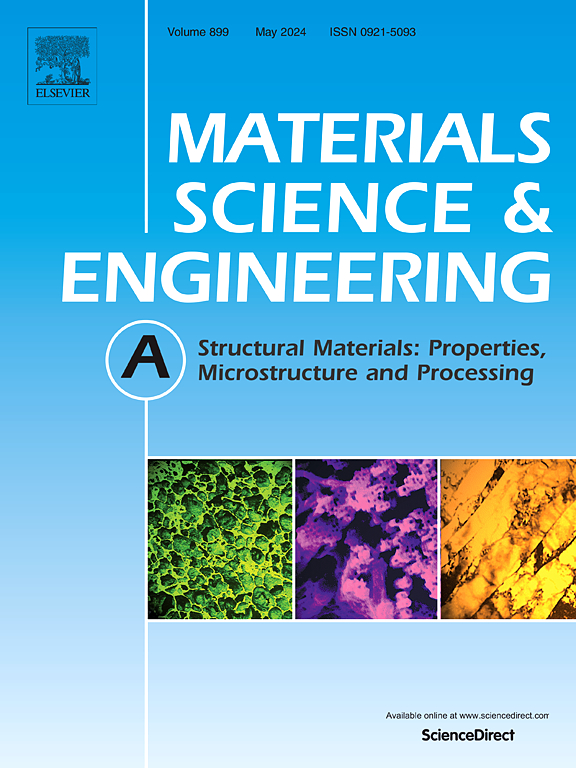High-temperature creep response of a nickel-based single crystal superalloy with varying initial microstructures
IF 7
2区 材料科学
Q1 MATERIALS SCIENCE, MULTIDISCIPLINARY
引用次数: 0
Abstract
This study examines the impact of different initial microstructures on the creep behavior of nickel-based single crystal superalloys. Three alloy samples (A1, A2, A3) with varying γ′ precipitate sizes and matrix channel widths were prepared through different aging treatments and subjected to high-temperature creep tests. Results show that the A2 sample, with moderate γ′ precipitate size and narrow matrix channels, exhibited the best creep resistance, lasting the longest in the steady-state stage. In contrast, A1 and A3 samples transitioned into the tertiary stage earlier due to larger or smaller precipitates and wider channels. Dislocation behavior analysis revealed that narrower matrix channels in A2 hindered dislocation motion, promoting a stable dislocation network and reducing superdislocations during creep. Calculations of critical stress and effective lattice misfit confirmed that A2's microstructure enhanced resistance to dislocation motion and antiphase boundary shearing, contributing to its superior creep performance. Overall, the findings highlight that an optimized γ′ precipitate size and matrix channel width significantly improve creep resistance, providing insights for designing high-performance nickel-based single crystal superalloys.
具有不同初始组织的镍基单晶高温合金的高温蠕变响应
本研究考察了不同初始组织对镍基单晶高温合金蠕变行为的影响。通过不同时效处理制备了不同γ′析出相尺寸和基体通道宽度的3种合金试样(A1、A2、A3),并进行了高温蠕变试验。结果表明,具有中等γ′析出尺寸和窄基体通道的A2样品具有最佳的抗蠕变性能,在稳态阶段持续时间最长;相比之下,A1和A3的沉积相或大或小,通道较宽,较早过渡到第三纪。位错行为分析表明,A2中较窄的基体通道阻碍了位错的运动,促进了位错网络的稳定,减少了蠕变过程中的超位错。临界应力和有效晶格失配的计算证实了A2的微观结构增强了对位错运动和反相边界剪切的抵抗,从而促进了其优异的蠕变性能。总体而言,研究结果表明,优化的γ′析出物尺寸和基体通道宽度显著提高了抗蠕变性能,为设计高性能镍基单晶高温合金提供了见解。
本文章由计算机程序翻译,如有差异,请以英文原文为准。
求助全文
约1分钟内获得全文
求助全文
来源期刊

Materials Science and Engineering: A
工程技术-材料科学:综合
CiteScore
11.50
自引率
15.60%
发文量
1811
审稿时长
31 days
期刊介绍:
Materials Science and Engineering A provides an international medium for the publication of theoretical and experimental studies related to the load-bearing capacity of materials as influenced by their basic properties, processing history, microstructure and operating environment. Appropriate submissions to Materials Science and Engineering A should include scientific and/or engineering factors which affect the microstructure - strength relationships of materials and report the changes to mechanical behavior.
 求助内容:
求助内容: 应助结果提醒方式:
应助结果提醒方式:


